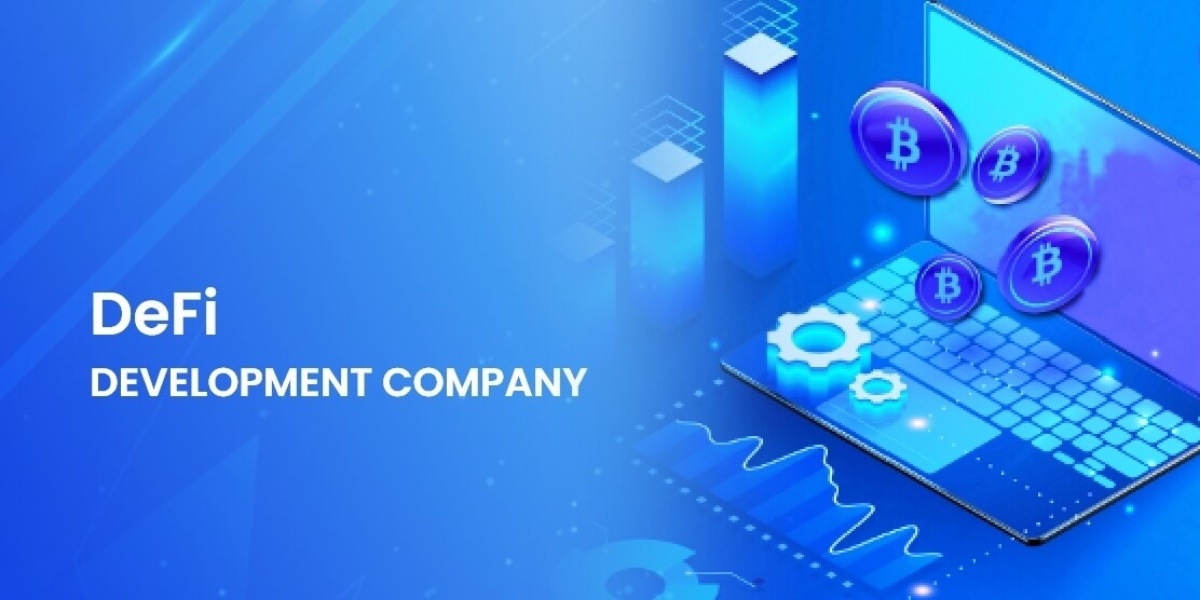DeFi (Decentralized Finance) has emerged as a groundbreaking phenomenon, revolutionizing the traditional financial landscape. In this microblog, we will explore the world of DeFi development, its key components, and the transformative impact it has on the future of finance.
Understanding DeFi
- Definition and concept of DeFi as a decentralized financial ecosystem: DeFi refers to a decentralized financial ecosystem built on blockchain technology that aims to provide open, permissionless, and transparent financial services to individuals worldwide. It eliminates the need for intermediaries and traditional financial institutions, allowing users to engage in peer-to-peer transactions and access a wide range of financial services.
- Overview of the underlying blockchain technology and smart contracts: DeFi relies on blockchain technology, which is a distributed ledger that records all transactions in a transparent and immutable manner. Smart contracts, self-executing contracts with predefined rules and conditions, play a crucial role in DeFi by automating and enforcing financial agreements without the need for intermediaries.
Advantages and Benefits of DeFi
- Elimination of intermediaries, enabling peer-to-peer transactions: DeFi eliminates the need for intermediaries like banks, brokers, or custodians, enabling individuals to directly transact with each other. This reduces costs, increases efficiency, and eliminates the need for trust in third parties.
- Enhanced financial inclusivity by providing access to financial services for the unbanked: DeFi opens up financial services to individuals who lack access to traditional banking systems. With just an internet connection, anyone can participate in DeFi and access services like savings, loans, investments, and more.
- Transparency and immutability of transactions on the blockchain: DeFi transactions are recorded on a public blockchain, ensuring transparency and immutability. Every transaction can be verified and audited by anyone, promoting trust and reducing the risk of fraud or manipulation.
- Ability to earn passive income through lending, staking, and yield farming: DeFi offers various opportunities for users to earn passive income by participating in activities like lending their cryptocurrencies, staking tokens in liquidity pools, or engaging in yield farming by providing liquidity to DeFi protocols.
Core Components of DeFi Development
- Smart Contracts: Smart contracts are programmable, self-executing contracts that automatically execute predefined actions when certain conditions are met. In DeFi, smart contracts handle various financial functions, such as lending, borrowing, trading, or yield farming.
- Decentralized Exchanges (DEXs): DEXs are platforms that enable users to trade cryptocurrencies directly with each other without the need for intermediaries. They utilize smart contracts to facilitate the matching and execution of trades, providing liquidity and enabling efficient price discovery.
- Stablecoins: Stablecoins are cryptocurrencies designed to maintain a stable value by being pegged to a specific asset, such as a fiat currency or a basket of assets. They provide stability within the volatile crypto market and enable seamless transactions within the DeFi ecosystem.
- Lending and Borrowing Protocols: DeFi lending and borrowing protocols allow users to lend their cryptocurrencies and earn interest or borrow assets by using their existing holdings as collateral. These protocols eliminate the need for traditional banks and enable users to access loans or earn passive income.
- Automated Market Makers (AMMs): AMMs are algorithms that provide liquidity to DEXs through liquidity pools. They determine asset prices based on supply and demand dynamics, allowing users to trade cryptocurrencies without relying on traditional order book-based exchanges.
Use Cases and Applications of DeFi
- Yield Farming: Yield farming involves users providing liquidity to DeFi protocols and earning rewards in the form of additional tokens or fees generated by the protocol.
- Decentralized Lending: DeFi lending platforms allow users to lend and borrow cryptocurrencies directly from other users, eliminating the need for intermediaries and providing competitive interest rates.
- Decentralized Insurance: DeFi insurance platforms offer decentralized insurance solutions, enabling users to protect their digital assets and mitigate risks associated with hacks, smart contract vulnerabilities, or other potential financial losses.
- Tokenization of Assets: DeFi enables the representation of real-world assets, such as real estate, artwork, or commodities, as digital tokens. This tokenization allows for fractional ownership, increased liquidity, and easier transferability of traditionally illiquid assets.
- Governance and Voting: DeFi governance mechanisms enable token holders to participate in the decision-making process of protocols. They can vote on proposals, upgrades, or changes to the protocol's rules, ensuring a more decentralized and community-driven ecosystem.
Conclusion
DeFi development is reshaping the future of finance by offering a decentralized, transparent, and inclusive financial ecosystem. With advantages such as eliminating intermediaries, providing financial access to the unbanked, and enabling passive income opportunities, DeFi is transforming traditional financial practices. Core components like smart contracts, DEXs, stablecoins, lending protocols, and AMMs form the foundation of DeFi applications. Use cases such as yield farming, decentralized lending, decentralized insurance, asset tokenization, and governance mechanisms demonstrate the versatility and potential of DeFi. As the DeFi ecosystem continues to evolve and mature, it holds the promise of democratizing finance and empowering individuals worldwide. By embracing DeFi development, we can unlock the potential to create a more inclusive, transparent, and efficient financial system for all.


No comments yet